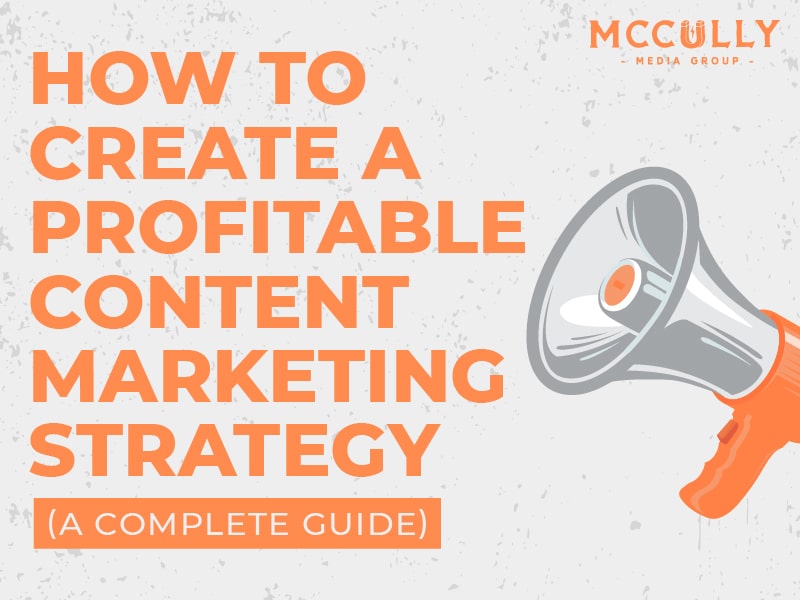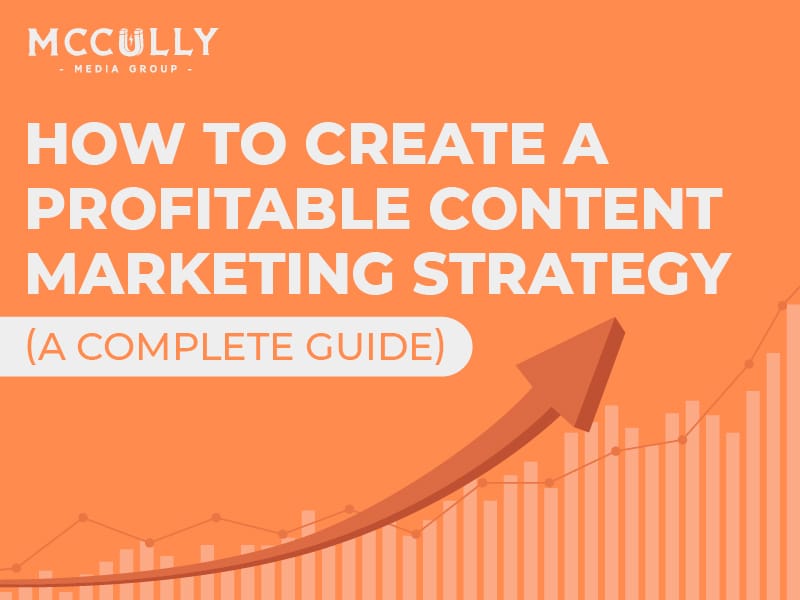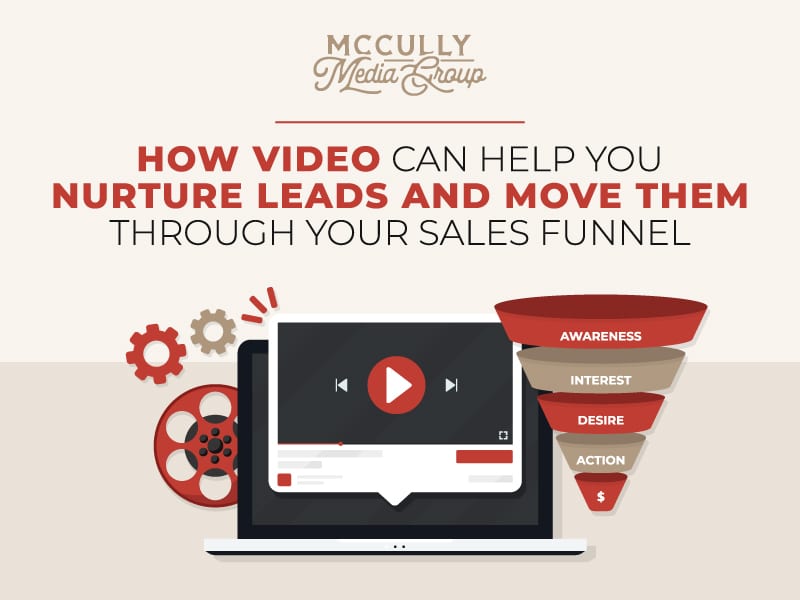Do you want to learn how to create a profitable content marketing strategy? First, let’s unpack a few benefits of content marketing.
Content marketing is essential for businesses in the online age. It helps you create more exposure for your business by increasing social shares, links back to your site from other sites, and customer referrals.
Companies that invest heavily into their content marketing efforts receive many more leads than those who don’t invest at all. Content marketing also drives web traffic. This makes it even easier for customers to find what they are looking for on your website when they search online via Google, Bing, or Yahoo! Search Engines.
Content marketing is an excellent way to attract more customers and create a return on investment. By putting in the time and effort to research, design, and plan your content marketing strategy, you can begin driving traffic to your website with minimal investment.
In this post, we’ll cover what content marketing is and what it is not. We’ll then discuss how to create a profitable content marketing strategy using 7 essential steps.

What is content marketing?
Content marketing is about creating and disseminating relevant content to attract and retain a clearly defined target audience. It helps build your brand’s online reputation and credibility.
Content marketing should be educational and not focused on immediately converting a prospect into a customer. Many marketers make the mistake of creating content that is too sales-oriented instead of making useful resources for their audience.
Content marketing differs from sending traffic straight to a sales page on your website because it is not focused on generating sales at the time of interaction. Instead, the goal is to educate and inform your audience to build a strong relationship over time. This content strategy will ultimately lead to increased engagement, loyalty, and trust.
We can learn a lot from content marketing pioneers who started creating valuable content around the beginning of the 20th century.
These include agricultural equipment maker John Deere, who began publishing a magazine for farmers in 1895. Mass-produced powdered gelatin was only sold to restaurants and professional chefs when it was patented back in 1845. In 1904, a marketer for Jell-O started targeting homemakers. They started creating recipe books to show the hundreds of creative ways home cooks could use Jell-O.
Content marketing means taking the time and effort to produce valuable content that will be helpful and even entertaining for your target audience. That includes existing and potential customers. But don’t take our word for it! Watch as one of our favorite marketers, Andy Crestodina, explains the ins and outs of content marketing in 180 seconds.
Content marketing activities include:
Creating compelling blog posts:
Blog posts should be well-researched, timely, and provide substantial value to your target audience. Blog posts can be a place where both business-to-business or business-to-consumer brands can share knowledge and insight.
With a large database of informational content pieces, you can then promote them through social media marketing and via email. This will provide your brand with more exposure and drive traffic back to your website.
Building an email subscriber list:
Having a database full of email subscribers is one of the best ways to generate leads. Email marketing is an excellent tool for building long-term relationships with your customers and prospects.
Establishing a social media presence:
Use platforms like Twitter, Facebook, Instagram, Pinterest, Google+, or TikTok to showcase your brand’s personality and establish itself as a thought leader. This helps foster long-term relationships with your customers.
Creating videos:
Video marketing is a powerful way to reach customers who are busy on the go. High-quality content marketing videos should be short, go straight to the point, provide valuable information that is easy to consume and shareable.
Make sure videos showcase your brand’s personality and keep them short and to the point.
However, before jumping in to create content for your products or services, it is important to use the following 7 steps to ensure your marketing plan helps customers on their buyer’s journey.

How to create a profitable content marketing strategy using these 7 essential steps
1. Define your audience:
Product-market fit is extremely important when it comes to creating an effective content marketing strategy. A content marketing strategy without a defined audience is worthless.
Create a clear profile in your head of who it is that visits your site and social media accounts.
-What products do you sell, and who’s buying them?
-Who is your buyer persona (company, demographics, and psychographics)?
Define your audience’s needs and wants by using surveys, focus groups, interviews, or polls. This will help you create successful digital marketing campaigns.
2. Define the mission – for you and your audience:
What is the end goal of your company? Is it to encourage people to live healthier lifestyles? To help overworked professionals leave their day job and start their own businesses? To give style-challenged men a better option than hitting the strip mall and floundering because they have no idea what to buy?
When deciding on your mission, it’s important to figure out what your customers really want and what you can realistically achieve. For example, your company can have a vision to make the world different. When you bring that down to the level of a mission statement, it should be more specific. It should state how many customers you aim to help achieve a particular goal in a defined period.
Having a clearly defined mission statement will help you to build the right kind of audience around the content that you create.
It also gives a boost of confidence and direction and helps employees see the bigger picture behind their daily tasks.
3. Find your topics:
What are the most popular topics in your industry? What is trending on social media? Identify trends that can be used to create content for your marketing strategy. For example, aspiring and would-be entrepreneurs start out with little experience, limited funds, and modest ambitions. A great topic to write about could be how to start a business on little money.
How can you fill the void in current content being offered by your competitors? One way to do this is to figure out what topics have been touched on but not fully explored. Circle back with your audience and ask which of these topics they would like more detail on. If any subjects make them cringe, consider avoiding them.
Questions to ask include:
- What is your audience searching for online?
- What is your target market interested in?
- What are their passions?
- Where do they like to hang out online and who influences them the most?
- Where should you be publishing your content to attract more potential customers?
4. Find your keywords:
Without the right keywords, your content marketing strategy will never be successful.
Keywords are what search engines use to find and rank your website. If you don’t know how to select the best keywords for your business, then it’s likely that no one else does either. This means that you’re not going to get any traffic from Google or Bing searches because they can’t find anything about your company online!
The first step is figuring out which words people are searching for in relation to what you offer. You can do this by using a keyword research tool like SpyFu – this tool provides valuable information on which keywords have high search volume and low competition so that you can focus on writing content that can rank high on search engine rankings.
Once you know what people are searching for, the next step is to make sure your website title, tag lines, and social media bios use keywords in a way that boosts your chances of getting discovered by potential customers who are looking for the products or services you offer.
What words or phrases most accurately describe the content that you will be creating? What keywords should you use for SEO purposes, but also for engagement and buzz?
Start by doing keyword research on Google and other search engines to find out what people are looking for within your industry.
Create a spreadsheet and input various keywords that you think your customers or target audience might use while they are online looking for information. However, don’t use too many keywords per article; stick to 1-3 phrases that can be easily tied into your content plan.
5. Collaborate with influencers:
Finding the right influencer for your content marketing strategy can be tough. However, influencers are always looking for new opportunities and you want them to promote your content because they have a large following of people who trust their opinion.
Who are the biggest influential people that your audience is following?
Who influences them in terms of lifestyle, opinion, character, or intellect?
Once you’ve identified some influencers within your industry, find out what kind of content they publish and if it is relevant to what you are trying to accomplish in terms of your content marketing strategy.
We’ve found that using an influencer network makes finding and reaching out to potential partners much easier. You can search through thousands of relevant profiles from all over the world with just one click. You’ll also be able to see which networks they belong to so that you know how many followers they have on each platform before deciding whether or not to contact them.
6. Promote your content on social media:
There are so many different social media platforms that you could use as part of your content marketing strategy. Which ones should you focus on? How do you get started with each platform? What kind of content should you post? What kind of audience interaction should you aim for?
Do you want people to go to your website or blog and comment? Or do you want them to be directed back to the source of your content for further reading if they enjoy what they read?
Find out more information about how other companies are using their social media channels and use this information to form your content strategy.
Don’t forget to promote your content on both the large social media channels such as Facebook and Twitter, but also create a niche following on some less well-known sites. You never know who might stumble upon your new blog post. When someone finds you via a niche community, it can create a much more intimate experience that tends to drive higher engagement.
7. Measure and optimize:
How are you going to measure your content strategy?
Start by identifying specific goals for each piece of content marketing.
Use custom reports and set up an alert on Google Analytics so you get notifications when people visit your website from a certain source. Which keywords or phrases led them right to your website?
Analyze the results and see how you can improve on this strategy in the future. Don’t be afraid to try new things, but don’t forget to measure what works best for your business and what doesn’t quite work out as well either.

Bringing your content strategy together
Whether you are a small business owner, marketing manager for a large company, or just trying to use your personal website to build an audience online, content marketing is the way of the future. If you have been struggling with how to produce quality content that engages followers and converts them into buyers then this article should help get things moving in the right direction.
What do you want to see in the future of your business? How would a content marketing strategy help you reach goals that have been lacking in previous attempts?
Focus on these ideas and keep an open mind when it comes to learning new things because quality content is what will make the difference between gaining traffic and followers and losing them over time.
Don’t stretch yourself too thin by trying to create content for every interest group imaginable, but don’t be so narrow-minded that you ignore potential buyers who might just like to read your content as well. The goal of any content marketing campaign is to engage your audience and convert them into customers, so make sure every piece of content is published with that goal in mind.
Want help with your content marketing?
Content marketing is a great way to grow traffic, leads, and conversions for your business.
Unfortunately, knowing how to create a content marketing strategy is only the first step. However, putting it into practice can be extremely difficult when you are short on time.
We have helped hundreds of businesses with their content marketing strategy by providing them with high-quality articles that are optimized for search engines and social media channels. Our team of writers will work with you every step of the way from brainstorming topics to writing engaging copy so that you don’t have to worry about any aspect of content creation.
Our mission is to help you create great content that is easy for customers to find and engage with so you can spend less time marketing your business and more time doing what you love.
If you want to start producing great content marketing at a higher level than before, then get in touch with us today for a chat about how we can help.
Learn more at McCully Media Group.





